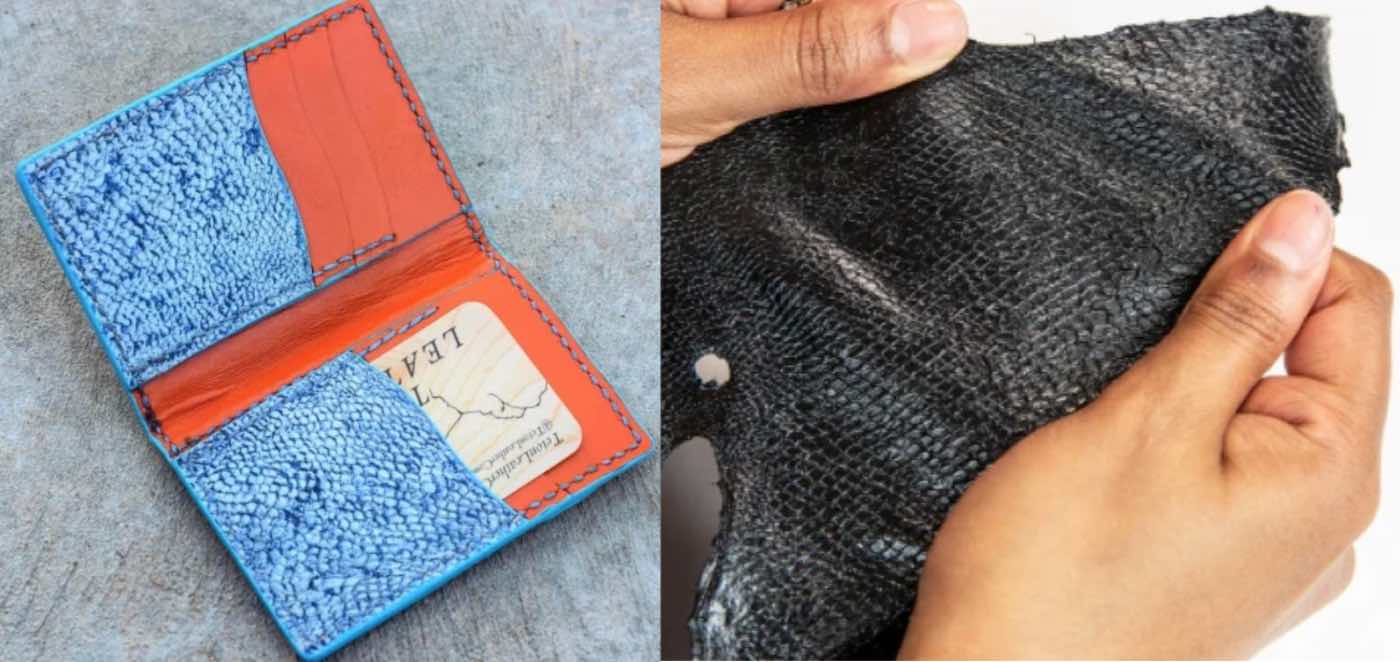
An exotic aquarium staple, the spectacular lionfish is unfortunately an invasive species that spells catastrophe for Atlantic and Caribbean ecosystems it happens upon.
Fortunately for these seas, Inversa Leathers is harvesting these fish every day to make equally-spectacular leather for fashion products.
The garment and fashion industries are some of the largest polluters in the consumer goods sector. Invasive species, however, represent a uniquely beneficial opportunity to transform supply chains into ones which work for the planet, not against it.
For Aarav Chavda, an avid scuba diver and engineer who had seen many of his favorite reefs off the Florida coast become barren and lifeless, that meant launching Inversa with his childhood friend as a way to save these habitats. The lionfish were major culprits in their devastation, and so the lionfish had to go.
“Unfortunately, there are millions of lionfish in these ecosystems, and we have a long way to go to thinning out this population,” Chavda told Fast Company. “But there are many other invasive species out there. We believe all of them can be used in fashion products.”
His company buys lionfish from fishermen and fishing firms across Florida, Mexico, and the Caribbean, to the tune of several thousand per day. It wasn’t that these fisherrmen didn’t know the lionfish were destroying reef and shallow sea ecosystems before, but there was no-one paying for them.
MORE: Sustainable Wind Turbine Towers Being Made of Eco-Friendly Wood
Inversa ships the lionfish to a tanning facility in Ohio after selling all the meat to local restaurants in Tampa. In Ohio, the leather is put through a sixty-step tanning process, and sold to a variety of designers, including Italian shoe brand P448, Teton Leather Company, and others.
At the moment, these projects are priced more for celebrities than regular people (maybe the famous can do their part by purchasing one or two items?).
RELATED: Solar Covered Skyscraper Will Produce All its Own Energy
Turning invasive species into mass-harvestable resources is a great way to monetize the capture of them—which usually costs governments tens of millions of dollars. In Berlin, a food truck offers a menu filled with invasive species, suggesting that if you can’t beat them, eat them.
In London, designers are utilizing the government’s multi-million pound project to clear city water pipes of quagga mussels—by grinding the bivalves’ shells up to make powder for biological glass tiling.
GIVE a Flash of These Stylish Purses in Those News Feeds…





















Good thinking outside the box! There was a fish in the Mississippi River, also invasive, that was eating something in the river, other fish ? I don’t remember, it was on Facebook, they were worried about it taking over and didn’t know what to do. I suggested, does it taste good? Cook it and come up with a good recipe and sell it to restaurants, McDonald’s fish sandwich and other fast food restaurants. I have not heard anything more about it since then. Find something invasive, find it’s nemesis.